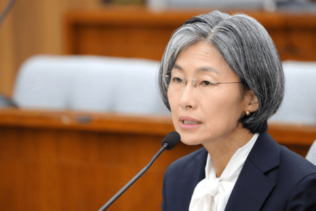November 17th. According to South Korea’s Chosun Ilbo and MBC News, on November 16, the South Korean Supreme Court overturned the innocence verdict of A in the indecency case and sent the case back to Changwon District Court for retrial. He also stated that it is inappropriate for the second-instance judgment to question the credibility of the victim’s statement just because the victim did not act “like the victim” and showed corresponding negative emotions. Earlier, Mr. A was sued by the prosecutor for allegedly compelling molestation.
According to the South Korean News Agency, A, who was an employee of a convenience store company, was handed over to the court for allegedly molesting the owner B in April 2017. The results of the police investigation revealed that A touched B’s head while B was explaining his business. Then B said he refused and pushed A, but A did not stop. In addition, the prosecutor said that during the investigation, it was discovered that A had hugged B’s neck from behind after B was sitting down, and forced to kiss B on the cheek to commit indecent assault.
In the first-instance judgment, the court held that “B made a specific and consistent statement about the victimization process, and its credibility was recognized, and the surveillance video also proved this.” It paid 4 million won about 4000$ and ordered A to accept a 40-hour sexual violence treatment program. On the contrary, the second trial based on B’s expressions and actions in the convenience store surveillance video, and concluded that when physical contact occurred, B’s expressions and behavioral reactions were combined with “the two look like joking”, “it’s not like mandatory contact”. Furthermore, it is determined that part of B’s statement is not credible, and A is not guilty.
However, the Supreme Court of South Korea believes that the basis for the judgment of innocence in the second instance is actually to accuse B of not acting like a “victim”, “this is not appropriate from a legal point of view”, “it cannot be denied at will. The credibility of the victim’s statement”. The Supreme Court also stated that if B’s statement is found to be credible, further evidence investigations should be used to make a cautious judgment. However, the judgment of the second instance is largely based on A’s modified statement and is not sufficient to overturn the first instance judgment. Therefore, it was decided to overturn the second-instance judgment and send it back for retrial. (Hu Min, Overseas Net)



